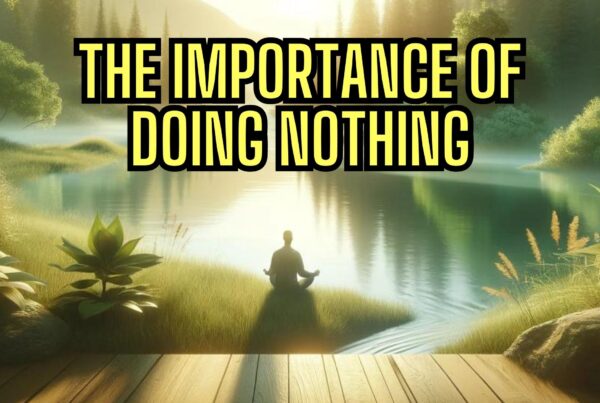Applying Therapy Insights: Bridging the Gap Between Knowing and Doing
In the realm of personal growth and therapy, a common hurdle many face is translating intellectual understanding into tangible action. Individuals often enter therapy with the hope that insights gained in sessions will automatically translate into changed behaviors and improved well-being. However, the journey from intellectual comprehension to practical application – from reading to doing, from knowing to practicing – is where the real transformation occurs. This blog explores the crucial aspect of applying therapy insights and offers practical strategies to effectively bridge this gap.
Understanding the Disconnect Between Knowledge and Action
The journey of self-improvement often starts with a quest for knowledge. People read self-help books, attend seminars, and seek therapy to understand their challenges better. However, the leap from understanding a concept intellectually to feeling it emotionally and implementing it practically is not always straightforward. This gap can be attributed to various factors, including fear of change, deeply ingrained habits, and a disconnect between the mind and the body.
The challenge can also come from those who feel that ‘the reading’ is all that is needed to overcome their challenges. Reading will offer insight, but what you do with the insight after that is more important. It isn’t uncommon in session for me to frequently return back to the basics with people and to remind them of some of the key frameworks they’ve read. The key here is to read and then allow yourself to see the world through that framework. This trying on of a new reality can help to promote the shift that might be required.
The Role of Active Participation in Therapy
Therapy is not a passive process where change happens to you; it’s an active engagement where change happens with you. The sessions are a starting point, but the real work continues outside the therapist’s office. Applying therapy insights requires commitment and conscious effort every day. It’s about taking the insights and techniques learned during sessions and incorporating them into daily life.
It isn’t uncommon for people to return to a session having told me that they haven’t done any of the exercises or techniques that we discussed in the last session. Imagine you went to a physiotherapist because you were experiencing physical pain. They worked on the sore point and then gave you some exercises to do daily between sessions. If you turned up to the next session and you had not done any of the exercises, who is responsible for the continued pain you’re experiencing?
Practical Strategies to Apply Therapy Insights
1. Set Realistic Goals: Start by setting small, achievable goals based on your therapy insights. If your therapist suggests mindfulness exercises, commit to a few minutes each day and gradually increase the duration.
2. Reflect and Journal: Keep a journal to reflect on your daily experiences and feelings. Writing helps in solidifying thoughts and insights gained in therapy sessions.
3. Behavioral Experiments: Challenge yourself to step out of your comfort zone. If your goal is to reduce anxiety in social situations, start by initiating small conversations and gradually increase your exposure.
4. Mind-Body Integration: Engage in activities that connect your mind and body, like yoga or mindful walking. These practices help in embodying the insights and making them a part of your lived experience.
5. Accountability Partners: Share your goals with a trusted friend or family member who can help keep you accountable. Regular check-ins can motivate you to stay on track.
6. Celebrate Progress: Acknowledge and celebrate your achievements, no matter how small. This reinforces positive behavior and motivates further action.
Overcoming Barriers to Practicing Therapy Insights
Many face obstacles in applying therapy insights, such as resistance to change or fear of the unknown. It’s essential to recognize these barriers and address them:
1. Identify Resistance: Be honest about what’s holding you back. Is it fear, comfort in the familiar, or something else?
2. Small Steps Approach: Overwhelming change can be intimidating. Break down your goals into smaller, more manageable steps.
3. Seek Support: Don’t hesitate to reach out to your therapist or support group for guidance and encouragement.
4. Reframe Failures: View setbacks as learning opportunities rather than failures. Each step, whether forward or backward, is part of the growth process.
Navigating Emotional Understanding and Intellectual Knowledge
A significant aspect of applying therapy insights involves balancing intellectual understanding with emotional processing. While intellectualizing our experiences can provide clarity and understanding, it often lacks the emotional depth required for transformative change. Encourage yourself to feel and experience emotions rather than just analyze them. Techniques like mindfulness and meditation can be helpful in fostering this deeper emotional connection.
Integrating Insights Through Repetition and Routine
The power of habit can be harnessed to make the application of therapy insights more effortless and natural. By repeatedly practicing new behaviors or thought patterns, they gradually become part of your routine. This could mean setting aside time each day for mindfulness, practicing positive affirmations, or consistently challenging negative thoughts.
Creating a Supportive Environment
Your environment plays a crucial role in applying therapy insights. Surround yourself with people and resources that support your growth. This might involve joining support groups, engaging with uplifting media, and creating a physical space that promotes relaxation and reflection.
Embracing the Journey of Change
Change is rarely linear, and setbacks are a natural part of the journey. Embrace these as opportunities for learning and growth. Each challenge is a chance to apply your therapy insights in real-life scenarios, helping you to build resilience and confidence in your ability to navigate life’s ups and downs.
The biggest challenge with change is simply this; some days change will feel easy and other days it won’t. On the days when it feels hard, it can be easy to fall back into old habits, feel that you’ve been unsuccessful, and throw it all in. In these moments, showing yourself some self-compassion, resilience, and tapping back into your values about what kind of person you want to be is important. It is highly unlikely that anyone will be able to be successful everyday. It’s important to not allow that one set back to create a greater challenge than necessary.
Embracing a Practice-Oriented Approach
Applying therapy insights is a dynamic and ongoing process. It’s about embracing the journey of self-improvement as a practice, where the focus is on consistent application rather than perfection. Remember, the bridge between knowing and doing is built through small, consistent steps. It’s about shifting from a mindset of passive acquisition of knowledge to active participation in your healing journey. By incorporating these insights into your daily routine, you nurture a practice that fosters real, sustainable change.
Release Hypnosis Melbourne Hypnotherapy
Since 2016, Lawrence Akers at Release Hypnosis has been guiding individuals through their personal journeys, offering Hypnotherapy and ACT-based work. Located on St Kilda Rd, Melbourne, Release Hypnosis is conveniently accessible and offers a range of services to address various issues. Whether in-person or online, we provide tailored support to help you apply your therapy insights effectively, bridging the gap between intellectual understanding and practical application. For those exploring if hypnotherapy is the right path, we offer a free 30-minute discovery call with no obligation. Discover more about how Release Hypnosis can assist you on your journey to change at Release Hypnosis.
Book Your FREE 30 Minute Consultation With Release Hypnosis NOW!
You may also like to read:
Discovering Purpose and Values: A Path to Mental Well-being
Can’t Visualise in Hypnosis? Here’s What You Can Do Instead.
Dealing with Financial Stress and Crisis: Finding Peace Amid Turbulence
What Is The Success Rate of Hypnosis?








